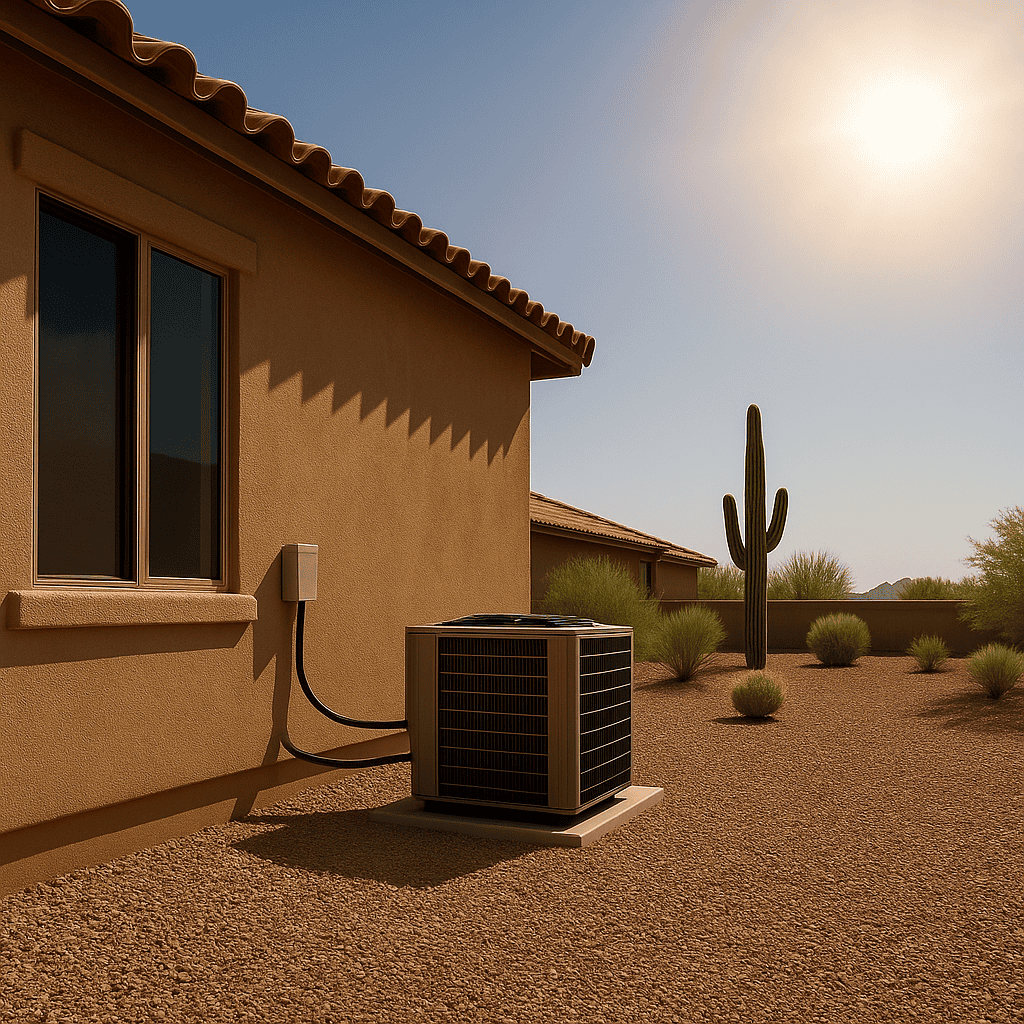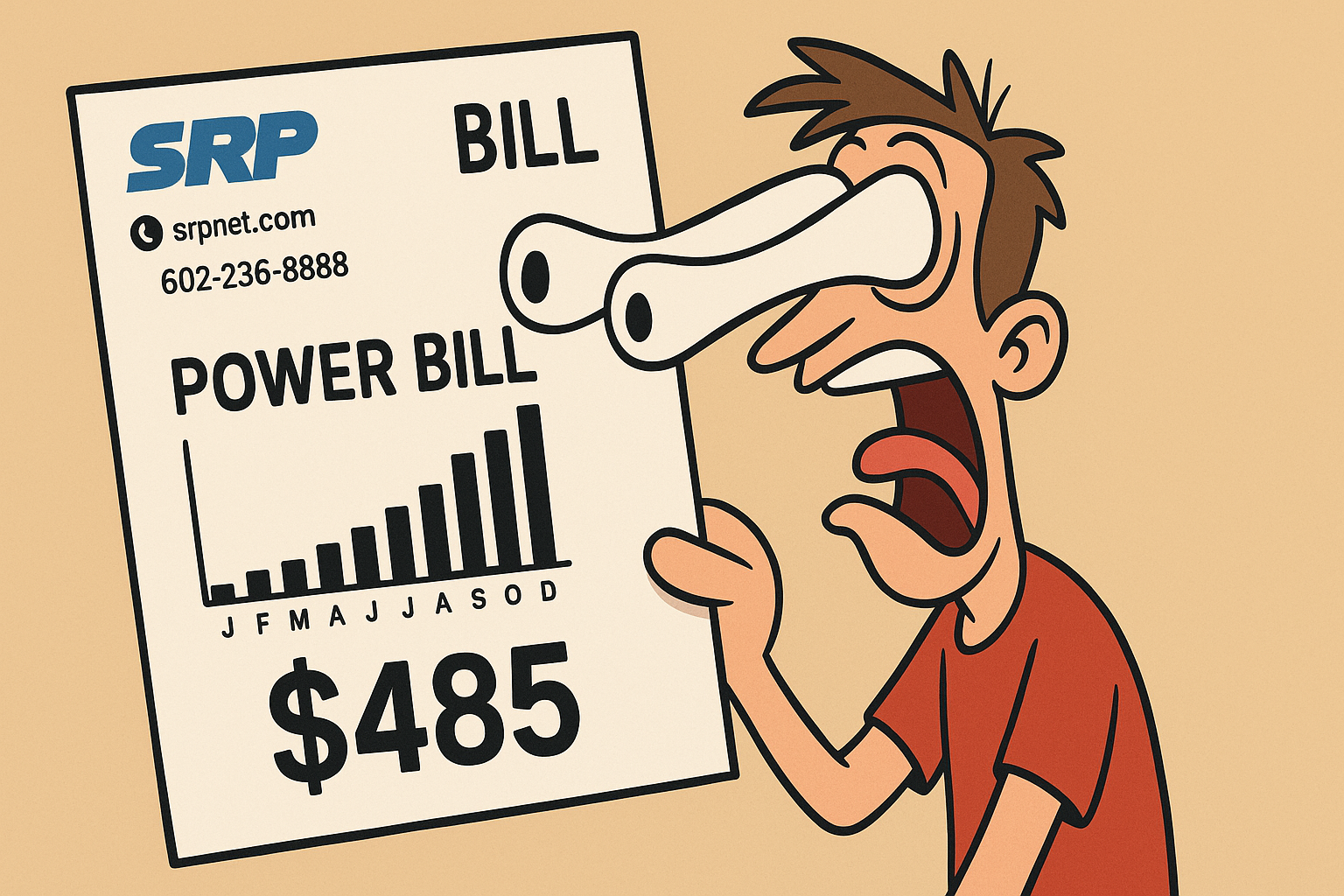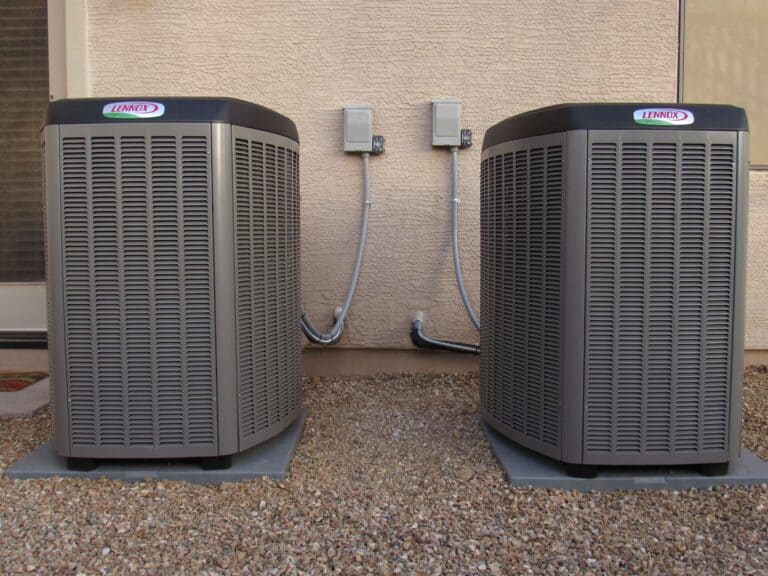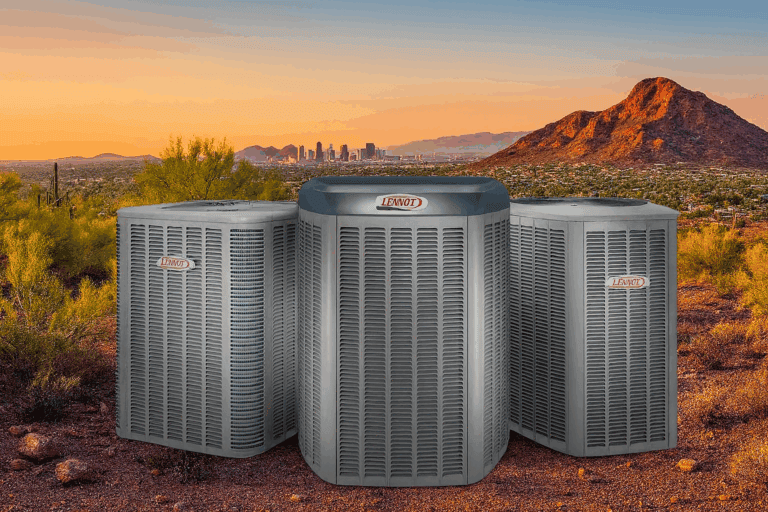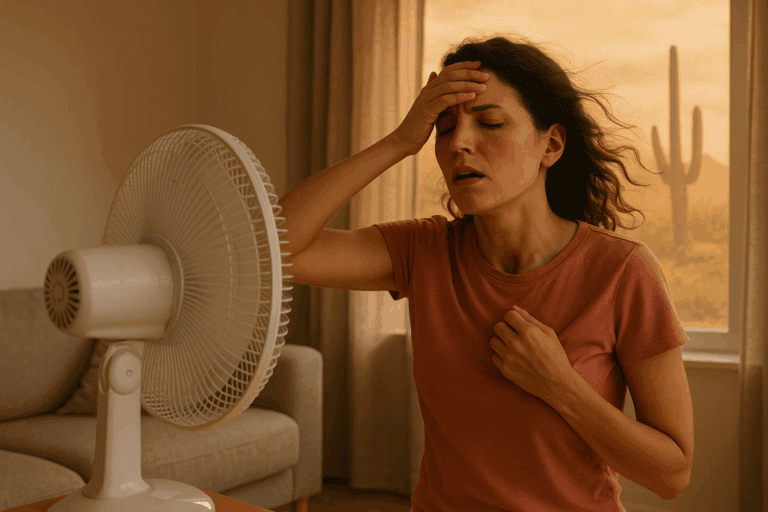7 Ways to Help Your Air Conditioner Work Better & Keep Up in Extreme Phoenix Heat
Do you wish your home had better air conditioning? When temperatures hit 115°F or more in Phoenix, even a brand-new AC system can struggle to keep your house cool. That doesn’t always mean there’s a problem with your new air conditioner—it might just be doing everything it was designed to do.
If your system is running constantly but your home still feels warm, here are 7 effective ways to help it perform better during extreme heat. These tips are based on 37+ years of HVAC experience. 28+ of those years with Magic Touch Mechanical installing and servicing HVAC systems right here in Mesa, Gilbert, Chandler, and the greater Phoenix area.
1. Know Your System’s Design Limits
Most air conditioners in Arizona are sized for 108°F outdoor temperatures—the average peak in Phoenix. They’re designed so a system can maintain 75 degrees at the thermostat when it’s 108 degrees outside. That’s known as the design temperature. On 115°+ days, your system may struggle to hold 75°F indoors—and that’s normal. Well, normal if you don’t have the things discussed in this article in place. If you do – no sweat – literally!
Pro Tip: This temperature is not something we pull out of thin air. Design temperature is based on historical data gathered by ACCA (Air conditioning Contractors of America). ACCA creates the standards for HVAC design and sizing known as ACCA-Manual J. It’s purpose is to ensure the system can keep up with historical averages and not be oversized on milder summer days.
Key point: Your AC isn’t necessarily undersized or broken. It might just be reaching the upper limit of what it was designed to handle.
For someone who hasn’t studied HVAC for their entire life this may be hard to wrap your head around. Common sense would dictate the design temperature should be 120+ degrees to keep up with our hottest ever recorded temperatures. This would be a very long read if I tried to explain 37 years of experience and study into one post – so you’re just going to have to trust me. It all makes sense when you know all the facts!
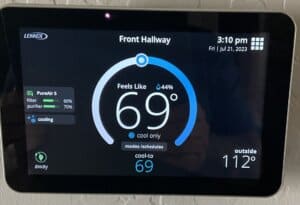
2. Upgrade Attic Insulation (R-38+)
Attic temps in summer often exceed 150°F. Without enough insulation, your ceiling becomes a heat sponge. Boosting attic insulation to R-38 or higher can significantly reduce heat gain into your living space.
✅ Use blown-in fiberglass or cellulose or paper backed batts
✅ Make sure ALL insulation is in direct contact with drywall – if not it will not work!
✅ Cover and air seal attic hatches and can lights. Can lights are a huge source of heat gain into your home.
3. Block Solar Heat Through Windows
Direct sunlight heats up interior surfaces fast—especially west-facing glass.
Solutions that work in Arizona homes:
- Sunscreens on exterior windows (the BEST way to reduce heat gain with the quickest ROI)
- Thermal curtains or blackout shades (in addition to sunscreens)
- Shade structures, pergolas, or exterior awnings
4. Seal the Leaks You Can’t See
Hot air doesn’t just creep in through doors—it leaks in through your attic, walls, and ceilings.
Common leakage points:
- Gaps around recessed lights and attic hatches
- Wire and pipe penetrations through top plates (in your attic)
- Drywall gaps at air registers
- Garage-to-home entry doors
Pro tip: Schedule a home energy assessment to uncover the hidden leaks – or work directly with an AC contractor with energy audit / home performance experience – like Magic Touch!
5. Check for Duct Leaks in the Attic
Leaky ductwork is one of the most common causes of poor performance. If your ducts are in the attic (most Phoenix-area homes), air leaks waste energy and reduce airflow.
Fix it with:
- Mastic sealing plenums and connections
- Upgrading ductwork to R-8 insulated duct wrap
- Proper airflow balancing (especially in multi-level homes)
Pro Tip: Proper duct design is equally, if not more important than sealing leaky ducts. If your HVAC contractor recommends redesigning poorly planned or installed ductwork – do it!
6. Avoid Oversizing Your AC System
A larger AC unit isn’t the answer—it can actually (and most likely) make things worse.
Oversized systems can:
- Short-cycle (turn on and off too quickly)
- Fail to dehumidify properly
- Cause uneven temperatures
- Disqualify you from rebates or efficiency programs
- Cut the life of your system in half if oversized drastically
Pro Tip: Always match system size to a Manual J load calculation—not guesswork.
7. Make Small Lifestyle Tweaks
You can give your system a break with a few simple habits, especially during peak afternoon hours:
🕒 Delay laundry and oven use until after 7pm (Doing laundry adds humidity and heat to your home)
🌀 Use ceiling fans while occupied (off when you leave). Ceiling fans keep people cool, not rooms/
🚪 Keep garage doors closed—garages trap and radiate heat. Especially when a hot car is pulled inside.
📉 Set thermostats to the desired temperature on extreme days for efficiency and comfort balance – do not raise them higher than your desired temperature when you leave or it has to spend hours catching back up. It’s a trade off – do you want to be comfortable or do you want a lower power bill – you can only choose one!
Bonus Tip: Maintain Your AC Like a Pro
Even a top-tier system can’t do its job if it’s neglected.
📌 Clean or replace air filters regularly
📌 Schedule annual maintenance to clean coils and check refrigerant
📌 Ensure the outdoor condenser isn’t blocked by weeds or debris
Pro Tip: I practice what I preach and clean my systems and BOTH coils twice a year – every year. The proof is in the pudding as they say: See the link below for proof of what my own units achieve on the hottest Arizona days.
Need proof this will work for you?
Check out our original guide: How to Cool Your Home on Hot Days in Phoenix »
Serving Mesa, Gilbert, Chandler & all surrounding Phoenix communities since 1997.
Need help sealing ducts, upgrading insulation, or just figuring out what’s going on with your system? We’ve got you covered.

